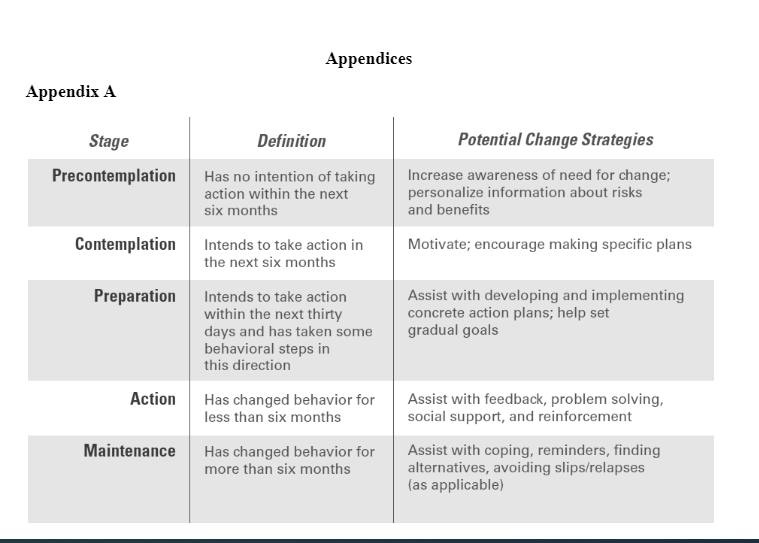HEALTH INTERVENTIONS
Introduction
According to National Cancer Institute (2005), health programmes and initiatives have higher likelihoods of achieving desired outcomes if they are based on clear understanding of the targeted health behaviours and the environmental setting in which they occur. Naidoo and Wills (2009) state that personal opinions of what constitutes health and illness should be incorporated in building intervention programmes to institute appropriate health interventions for a community. For those seeking guidance, healthcare dissertation help can be invaluable in ensuring that these programmes are well-researched and effectively implemented.
Relationship between Theories and Interventions
The National Cancer Institute (2005) reports that theories present systematic ways of understanding situations and events. Crosby and Noar (2011) report that public health theories assist in acquiring knowledge regarding disease and health within an environmental setting which aids public health practitioners in achieving a better understanding of their cultural and social work contexts.

An overview of PRECEDE/PROCEED frameworks and the Transtheoretical models
Matlo (2012) reports that the PRECEDE-PROCEED model presents a framework within which individual and community level theories, interpersonal communication, grassroots organising and media campaigns can be utilised. The model is a tool for building, implementing and evaluating health behaviour change programs.
In the previous unit, childhood obesity was identified as a critical health concern particularly in the developed world. After critical analysis of multiple frameworks, the stages of change model emerged as the most suitable intervention in designing, implementing and evaluating health programmes. The theory will be applied at the institutional level – primary school – to address childhood obesity.
The theory is founded on assertion that behavioural change is not an event but a process. According to the model, people attempting to change a behaviour move through five stages which are: pre-contemplation, contemplation, preparation, action and maintenance (see appendix A). The model is circular which means that people do not progress from one stage to another in a linear process.
As mentioned above, people cycle through the process repeatedly until they can comfortably progress to the next phase. Each stage has potential change strategies and the response from obesity victims can predict project success. Success can be determining by assessing how long individuals take to progress from a stage to another, the number of times individuals relapse and process truncations. If they are few in the first three stages, there is high likelihood of success. Social construction of health and illness at the experiential level would affect the obesity intervention programme by reshaping children’s identity. The factors to consider include stigmatisation and societal classification of illnesses which would impact the effectiveness of the programme (Espinel & King, 2009).
The transtheoretical model – stages of change – describes people’s motivation and readiness to change one or more behaviours (National Cancer Institute, 2005). As a change theory, it guides the development of health interventions and offers a basis for programme evaluation as opposed to explanatory models which describe reasons for existence of problems.

Conclusion
In summary, public health theories are fundamental aids in conceptualising and establishing successful and effective health programmes. Change theories guide design, implementation and evaluation of health interventions. Programme success results from accurate theoretical assumptions and proper implementation.
Take a deeper dive into Health inequality and policy intervention with our additional resources.
References
AlMarzooqi, A., & Nagy, M. (2011). Childhood obesity intervention programs: A systematic review. Life Science Journal, 8(4), 45-60.
Bambra, C., Gibson, M., Sowden, A., & Wright, K. (2010). Tackling the wider social determinants of health and health inequalities: Evidence from systematic reviews. Journal of Epidemiology and Community Health, 64(4), 284-291.
Berglund, E., Lytsy, P., & Westerling, R. (2014). The influence of locus of control on self-rated health in context of chronic disease: a structural equation modeling approach in a cross sectional study. BMC Public Health, 14.
Brosschot, J., Gebhardt, A., & Godaert, L. (1994). Internal, powerful others and chance locus of control: relationships with personality, coping, stress and health. Personal Individual Differences , 16(6), 839-852.
Community Tool Box. (2013). Evaluating the initiative. Retrieved February 16, 2017, from Community Tool Box: http://ctb.ku.edu/en/evaluating-initiative
Crosby, R., & Noar, M. (2011). What is a planning model: An introduction to PRECEDE-PROCEED. Journal of Public Health Dentistry, 71(Supplement 1:S7-15).
Espinel, T., & King, L. (2009). A framework for monitoring overweight and obesity in New South Wales. Sydney, NSW: NSW Department of Health and the Physical Activity Nutrition Obesity.
Matlo, C. (2012). Using the PRECEDE-PROCEED Model. Retrieved from http://ctb.ku.edu/en/evaluating-initiative
Naidoo, J., & Wills, J. (2009). Foundations for health promotion. Edinburgh: Bailliere Tindall/Elsevier.
National Cancer Institute. (2005). Theory at a glance - A guide for health promotion practice (2 ed.). Washington: U.S Department of Health and Human Services. Retrieved February 17, 2017, from https://sbccimplementationkits.org/demandrmnch/ikitresources/theory-at-a-glance-a-guide-for-health-promotion-practice-second-edition/

- 24/7 Customer Support
- 100% Customer Satisfaction
- No Privacy Violation
- Quick Services
- Subject Experts



